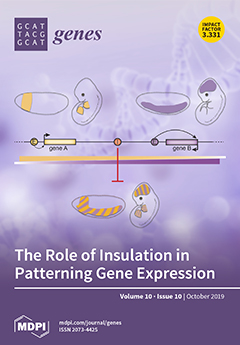Rosa chinensis, an important ancestor species of
Rosa hybrida, the most popular ornamental plant species worldwide, produces flowers with diverse colors and fragrances. The R2R3-MYB transcription factor family controls a wide variety of plant-specific metabolic processes, especially phenylpropanoid metabolism. Despite their
[...] Read more.
Rosa chinensis, an important ancestor species of
Rosa hybrida, the most popular ornamental plant species worldwide, produces flowers with diverse colors and fragrances. The R2R3-MYB transcription factor family controls a wide variety of plant-specific metabolic processes, especially phenylpropanoid metabolism. Despite their importance for the ornamental value of flowers, the evolution of
R2R3-MYB genes in plants has not been comprehensively characterized. In this study, 121 predicted
R2R3-MYB gene sequences were identified in the rose genome. Additionally, a phylogenomic synteny network (synnet) was applied for the
R2R3-MYB gene families in 35 complete plant genomes. We also analyzed the
R2R3-MYB genes regarding their genomic locations, Ka/Ks ratio, encoded conserved motifs, and spatiotemporal expression. Our results indicated that
R2R3-MYBs have multiple synteny clusters. The
RcMYB114a gene was included in the Rosaceae-specific Cluster 54, with independent evolutionary patterns. On the basis of these results and an analysis of
RcMYB114a-overexpressing tobacco leaf samples, we predicted that
RcMYB114a functions in the phenylpropanoid pathway. We clarified the relationship between
R2R3-MYB gene evolution and function from a new perspective. Our study data may be relevant for elucidating the regulation of floral metabolism in roses at the transcript level.
Full article






